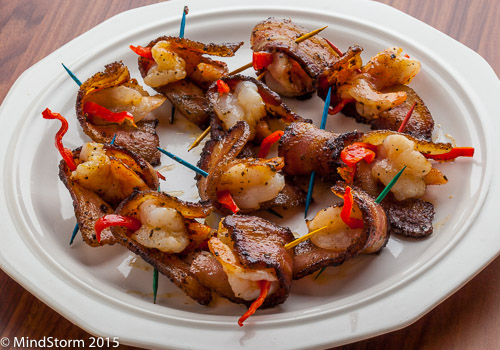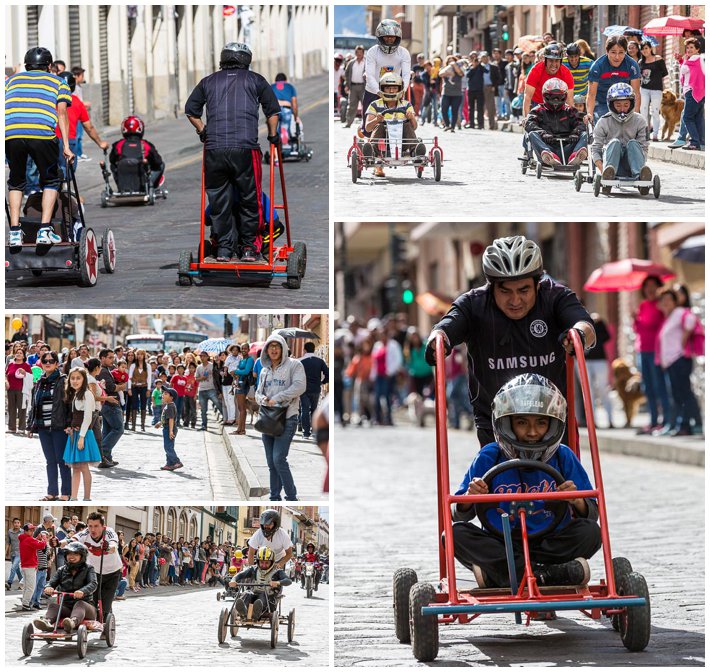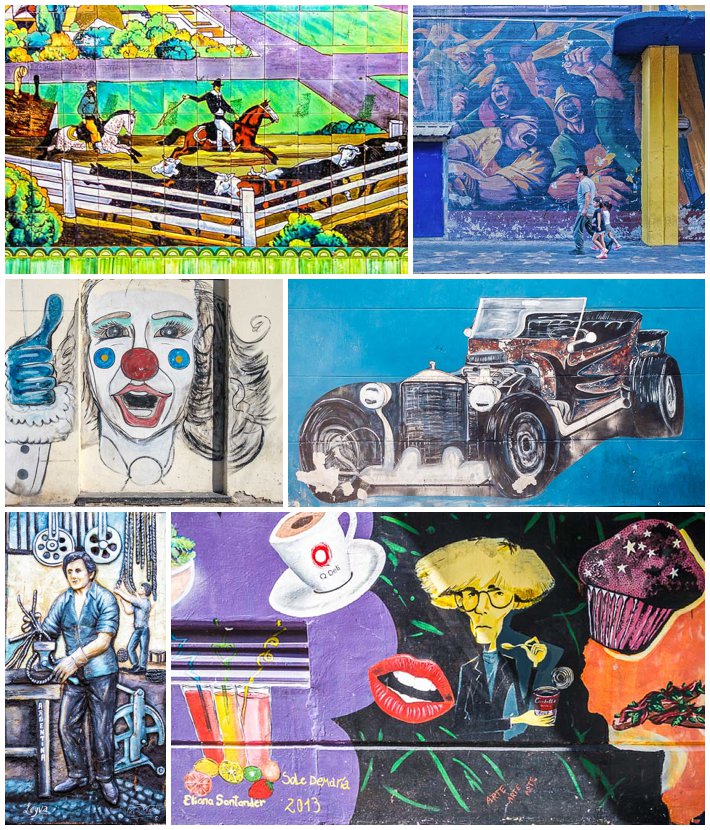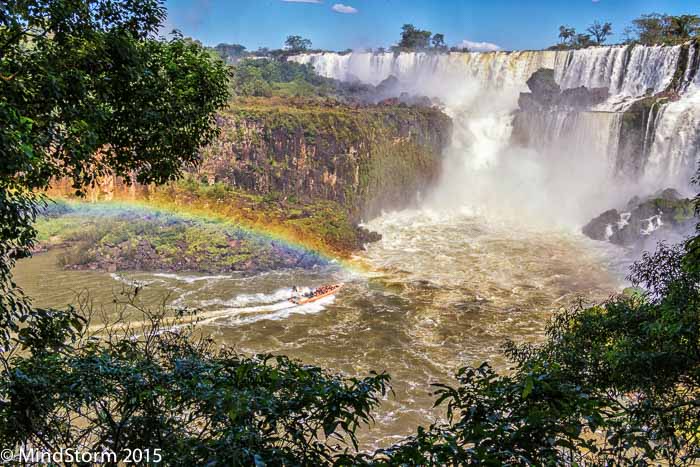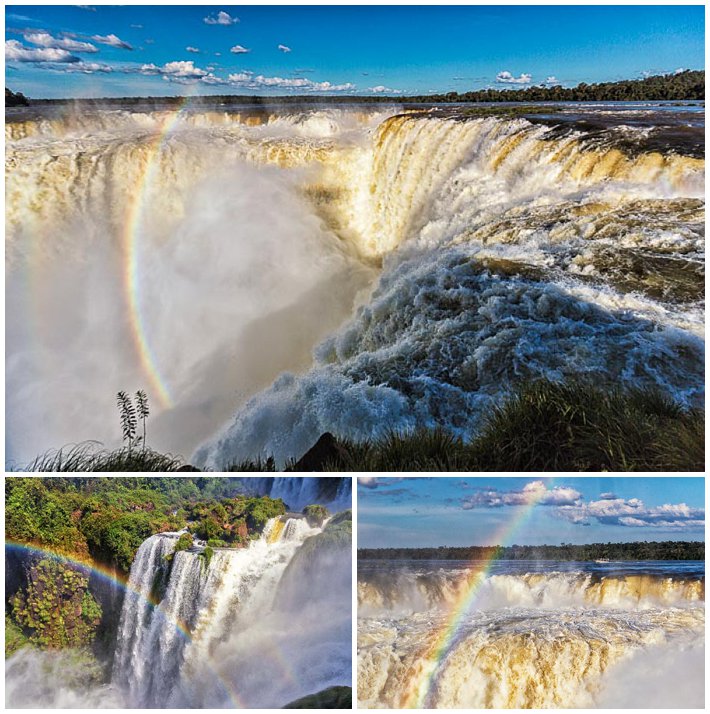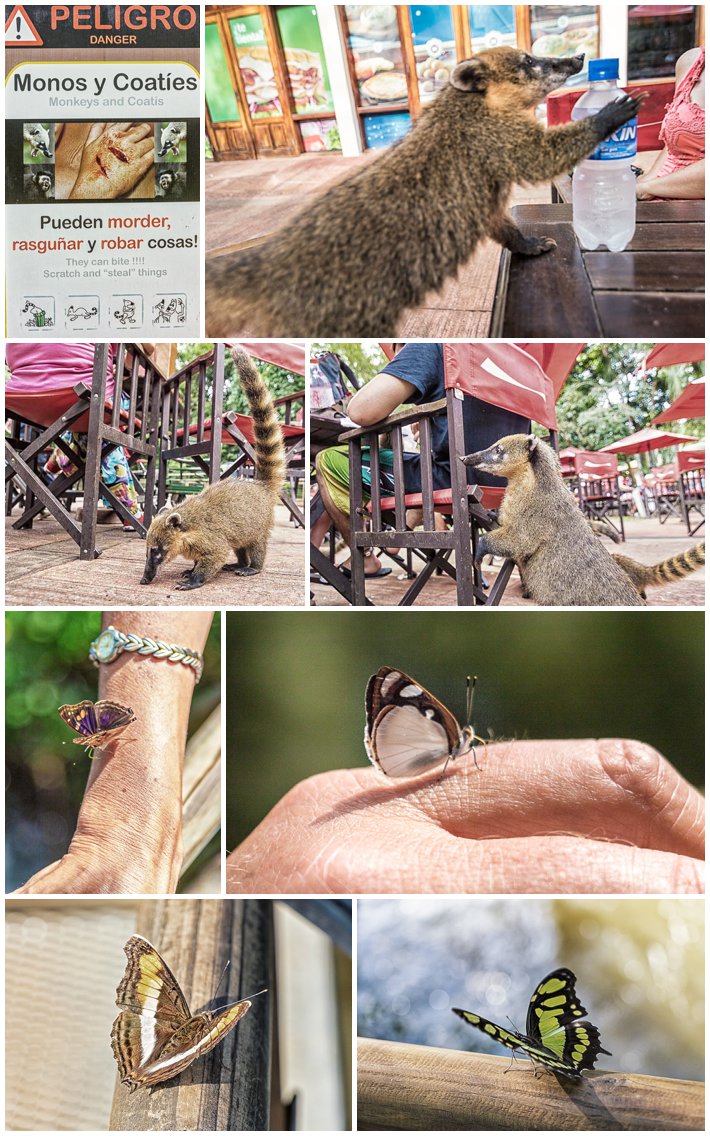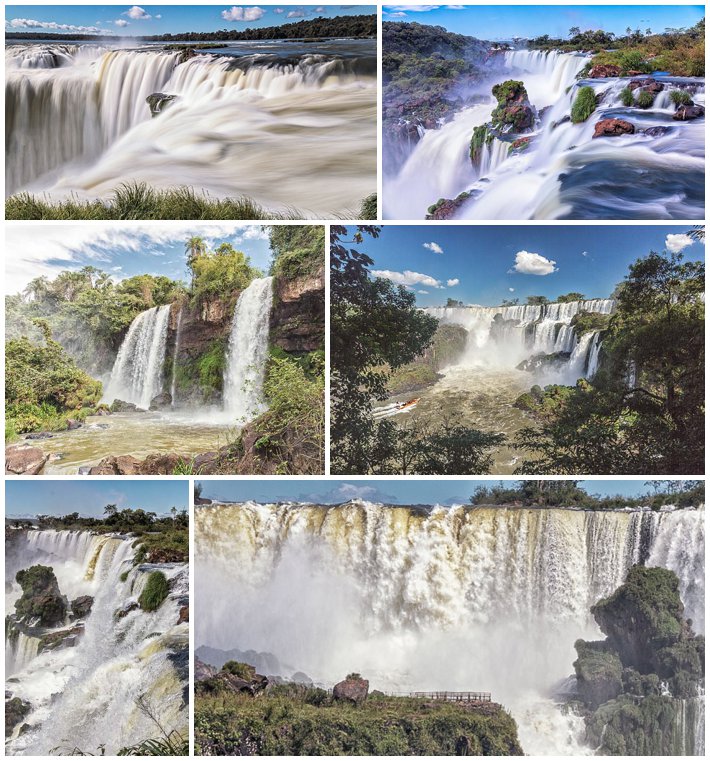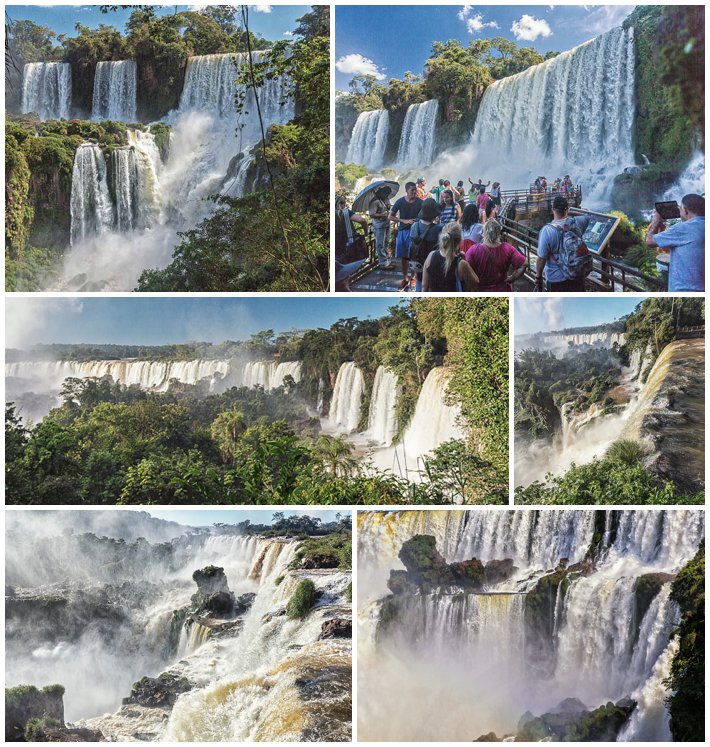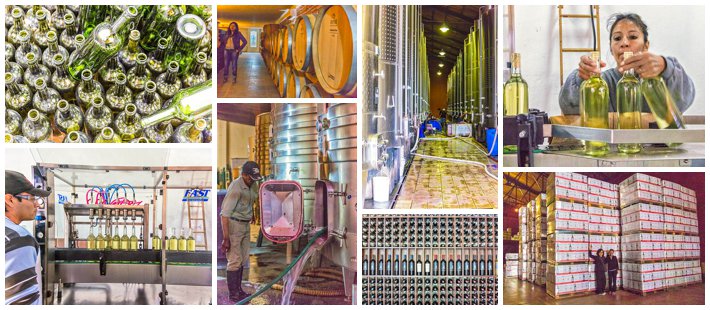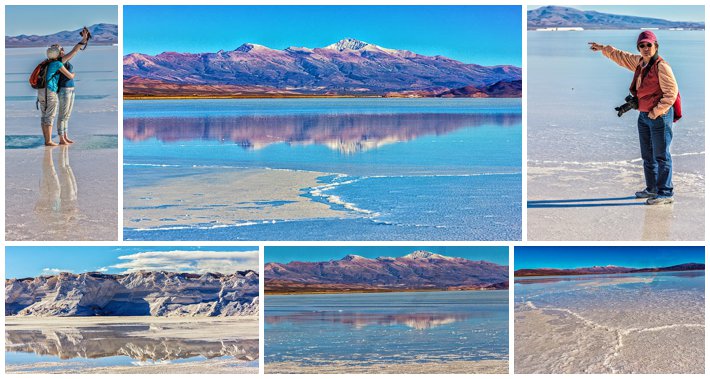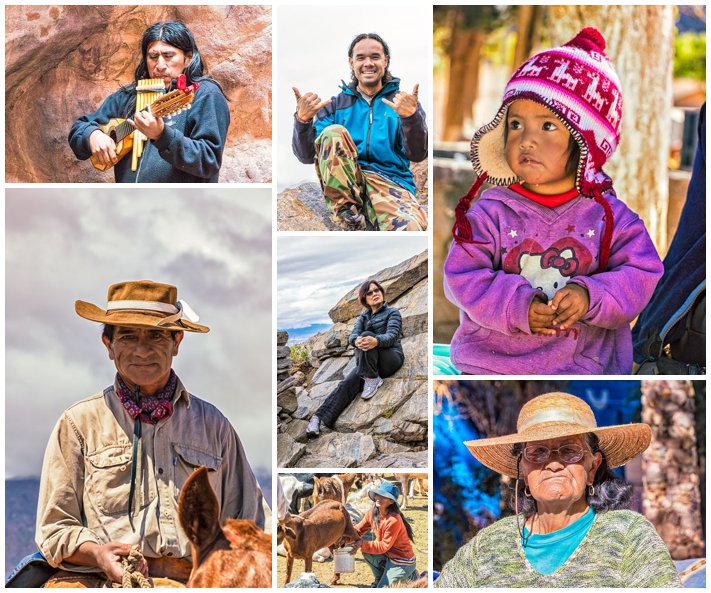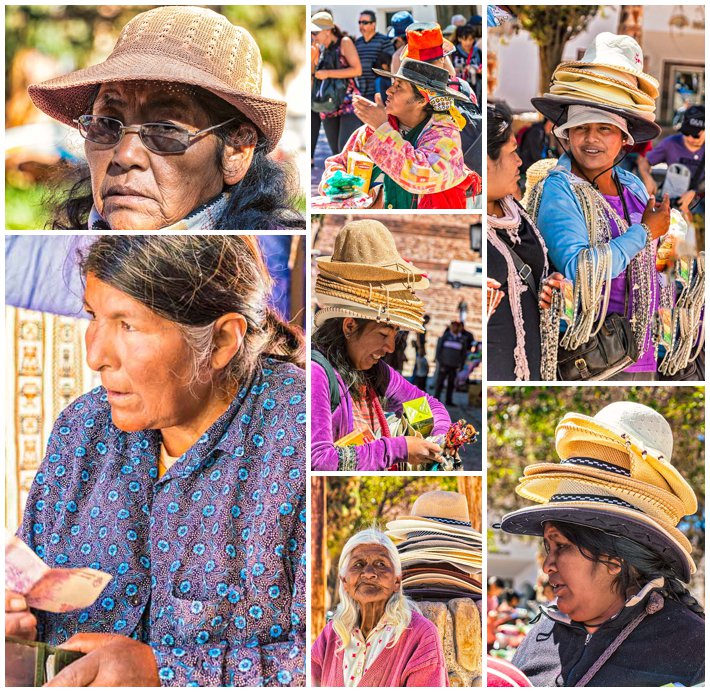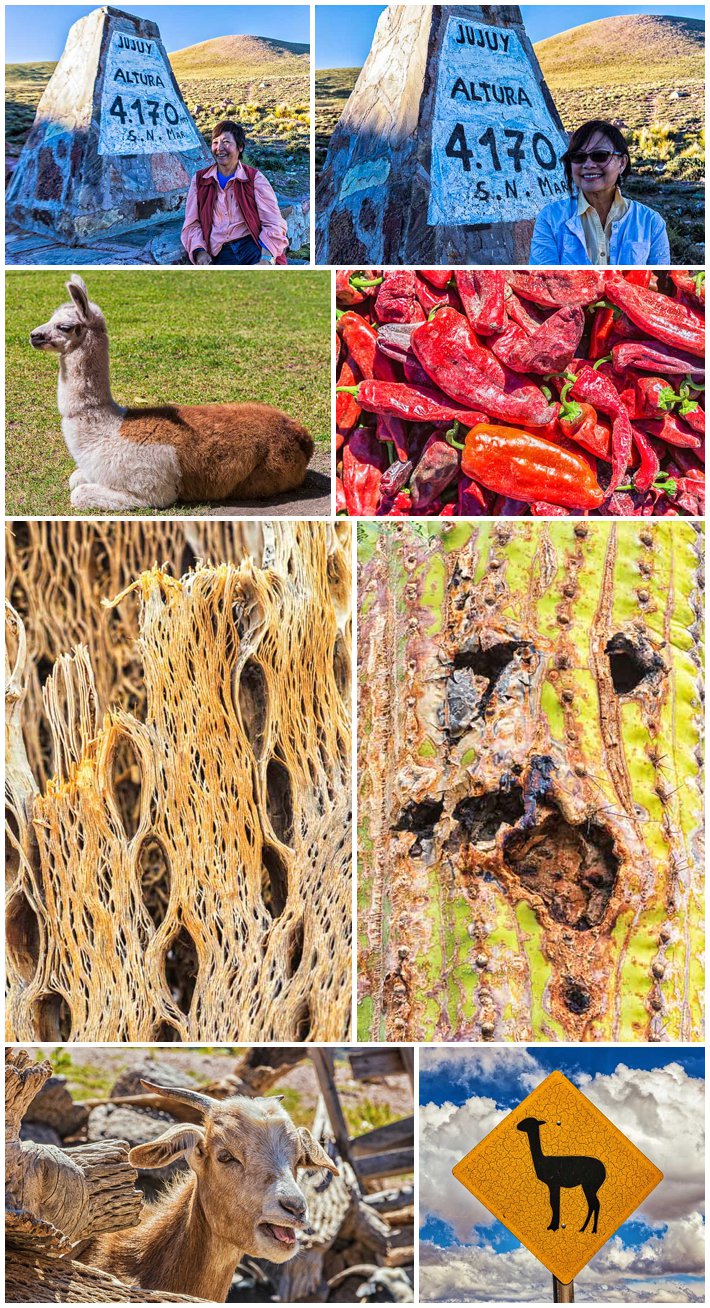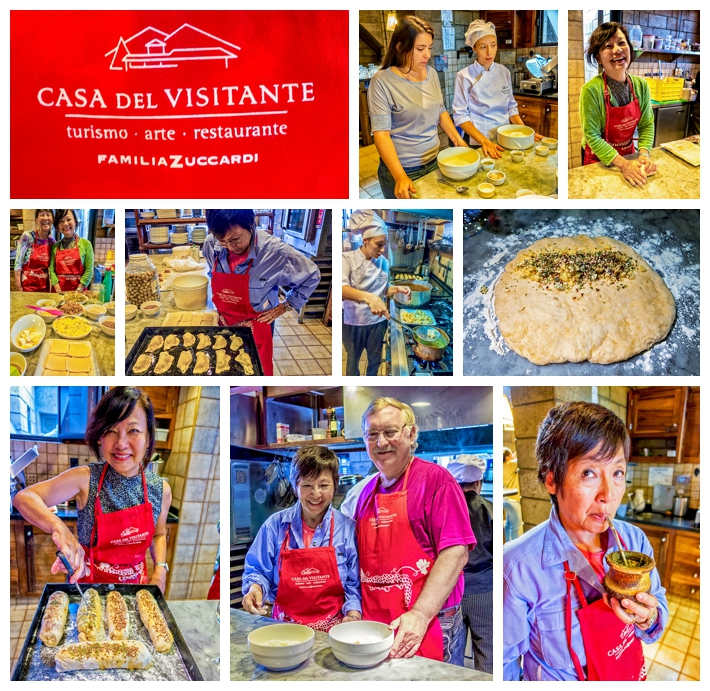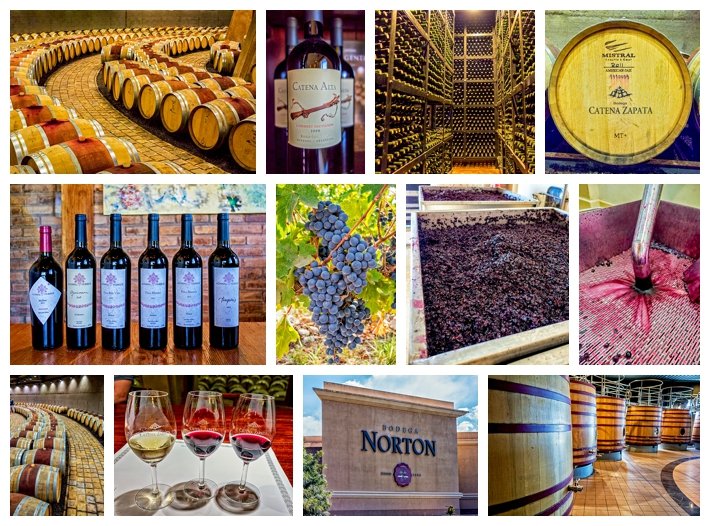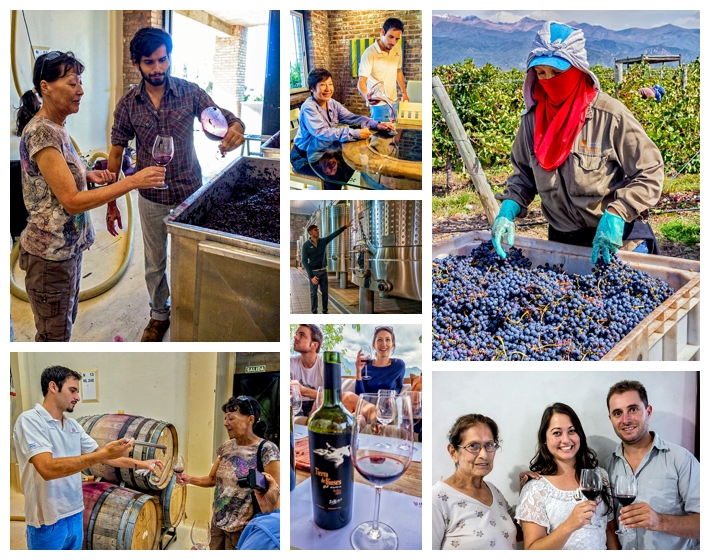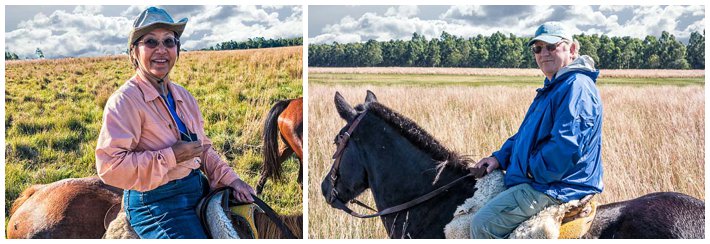 We finished our month in Argentina with four days at the Estancia Don Joaquin (Estancia is what they call a working ranch in Argentina) in Esquina. Though fairly close to Iguazu Falls, the only way we could reach it was to fly to Buenos Aires, and then take an overnight luxury sleeper bus. Though the bus was certainly spacious, with lay-flat seats, it still made for a long day (and night) to reach it. Fortunately, the ranch was worth it — you can read my TripAdvisor report on it here.
We finished our month in Argentina with four days at the Estancia Don Joaquin (Estancia is what they call a working ranch in Argentina) in Esquina. Though fairly close to Iguazu Falls, the only way we could reach it was to fly to Buenos Aires, and then take an overnight luxury sleeper bus. Though the bus was certainly spacious, with lay-flat seats, it still made for a long day (and night) to reach it. Fortunately, the ranch was worth it — you can read my TripAdvisor report on it here.
Both of us have ridden horses maybe half a dozen times, usually with nearly a decade between each ride. We told Angie (the co-owner of the estancia, with her husband) that we knew how to ride, but not well. She chose horses that would suit our experience — Burt got Patricia, while Evelyn got Carpincho (which is the Spanish word for the largest rat in the world). Thus we became “Patricia and the Big Rat.” 🙂
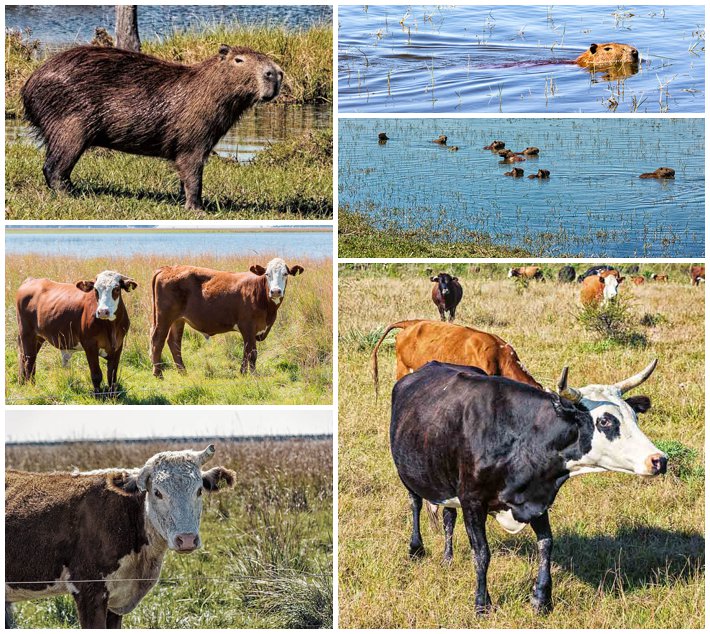 Just hours after arriving, we went out on a “truck safari” to see the animals of the area. The ride was mostly about seeing a large variety of birds and caiman. Unfortunately I did not have a suitable lens for bird photography, so I have nothing to share of them. At one place, we drove off-road by a small river, and saw the Capybara — the largest rodent in the world, and the animal for which Evelyn’s horse was named. The gregarious male adults were over 4 feet long, weighing almost 150 pounds. Though they are eaten in some parts of Argentina, this ranch owner protects them and does not allow hunting.
Just hours after arriving, we went out on a “truck safari” to see the animals of the area. The ride was mostly about seeing a large variety of birds and caiman. Unfortunately I did not have a suitable lens for bird photography, so I have nothing to share of them. At one place, we drove off-road by a small river, and saw the Capybara — the largest rodent in the world, and the animal for which Evelyn’s horse was named. The gregarious male adults were over 4 feet long, weighing almost 150 pounds. Though they are eaten in some parts of Argentina, this ranch owner protects them and does not allow hunting.
After a parilla lunch and a siesta, we did a sunset ride, where we kept mostly to a walk, as we remembered what is was like to be six feet off the ground on an animal that keeps wanting to eat the tall grass. At one point, we sped up to a cantor, but Burt almost lost his hat, and then quickly found that saying “whoa horsie” while pulling on the reins wasn’t enough. After our riding partner (they always had one gaucho per guest rider) helped get control, Burt realized that he had forgotten to also sit back in the saddle. By continuing to lean forward, he was giving Patricia conflicting orders. Burt and Patricia came to an understanding after that, and later rides were less eventful…
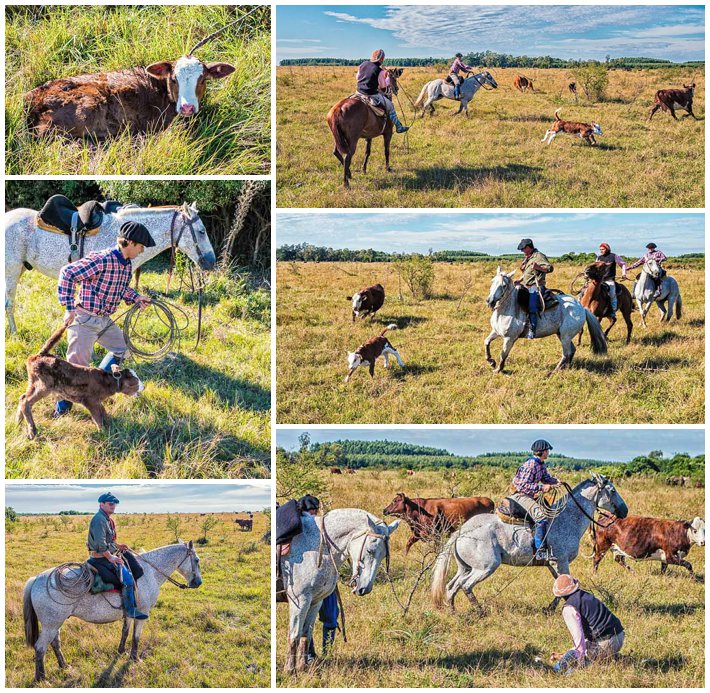 This is a fully working ranch with 800 cattle and 80 horses, where guests are allowed to ride along and watch, but in which gauchos do their normal day-to-day routine. As such, if you choose “gaucho activities,” what you see will vary with the needs of the day. When we did this on our second day, the gauchos were rounding up newborn calves to vaccinate and “mark” (each ranch has a specific ear cut they make to mark their cattle until the annual roundup for branding). It was amazing to see how accurate their lassos were. Even when the calf was hiding in shrubs, the gaucho captured it on their first throw every time.
This is a fully working ranch with 800 cattle and 80 horses, where guests are allowed to ride along and watch, but in which gauchos do their normal day-to-day routine. As such, if you choose “gaucho activities,” what you see will vary with the needs of the day. When we did this on our second day, the gauchos were rounding up newborn calves to vaccinate and “mark” (each ranch has a specific ear cut they make to mark their cattle until the annual roundup for branding). It was amazing to see how accurate their lassos were. Even when the calf was hiding in shrubs, the gaucho captured it on their first throw every time.
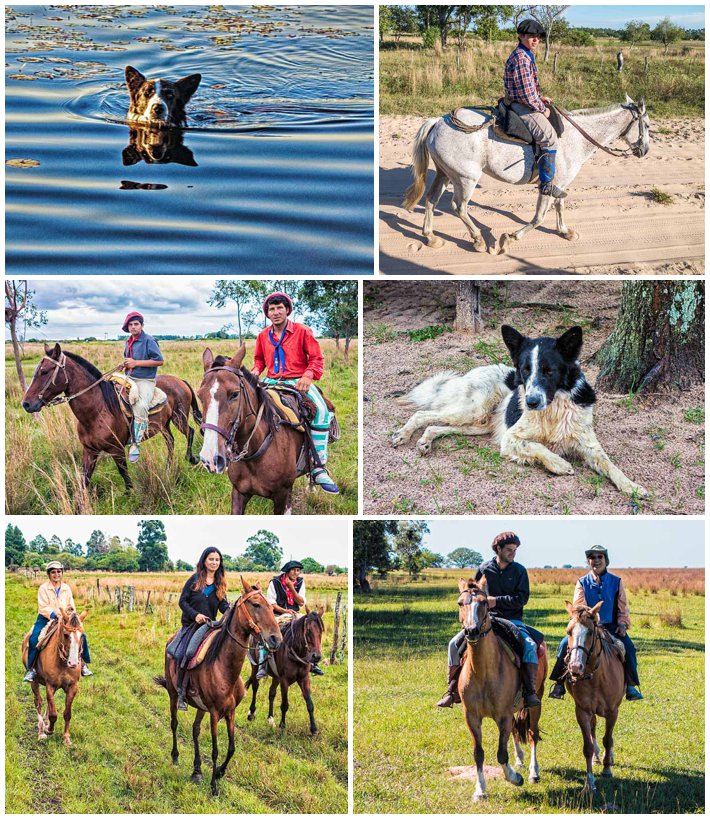 There was always at least one gaucho per guest rider, so any problems controlling the horse could be quickly resolved. Angie (the center woman in the bottom-left image above) is the owner, and extremely accommodating. On our third day, we asked for some riding lessons to improve our style, and she offered to come along and provide the help herself. And, or course, what ranch would be complete without a trusty dog along? When she got bored, she would run off and chase some cattle for awhile, clearly honing her skills in helping during roundup.
There was always at least one gaucho per guest rider, so any problems controlling the horse could be quickly resolved. Angie (the center woman in the bottom-left image above) is the owner, and extremely accommodating. On our third day, we asked for some riding lessons to improve our style, and she offered to come along and provide the help herself. And, or course, what ranch would be complete without a trusty dog along? When she got bored, she would run off and chase some cattle for awhile, clearly honing her skills in helping during roundup.
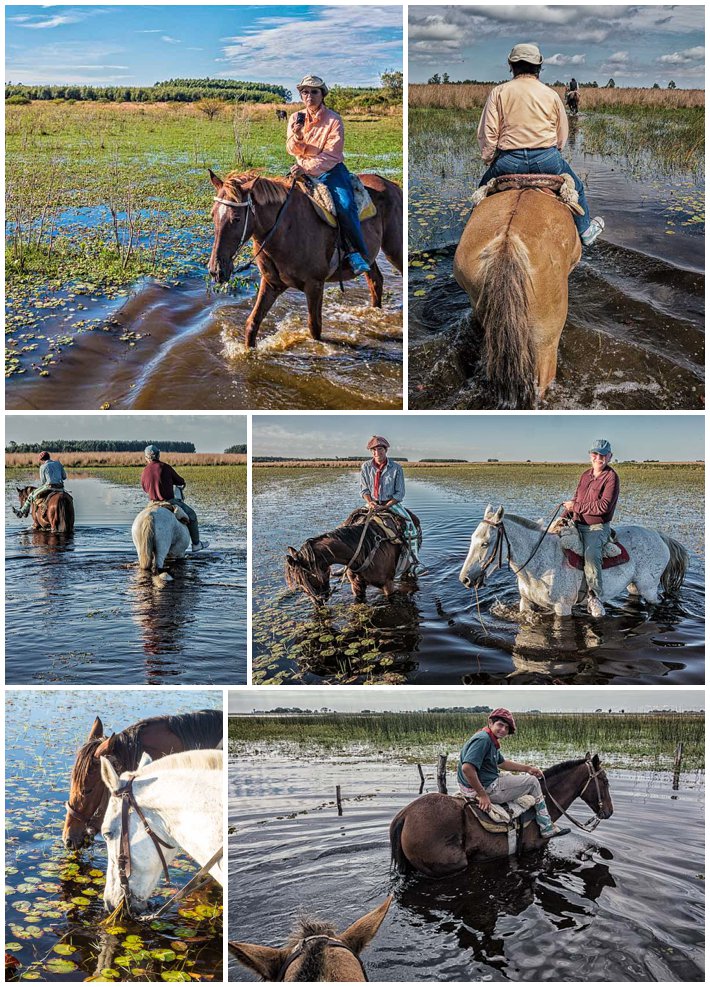 This region has had a seven year drought, broken this year with heavy rains. Angie told us this was the first time she had seen standing water on the ranch in all those years. As we rode through newly deep marshes, she explained how good this was for the grass, which in turn is good for the cattle and horses. Indeed, the horses loved eating the water lilies — a treat many had not had before in their lifetime. The weather was perfect for us, except for one night around dinner when the sky opened up, with a torrential downpour accompanied by almost constant lightning filling the sky for six hours — after which everything cleared and we were back to gorgeous weather the next day.
This region has had a seven year drought, broken this year with heavy rains. Angie told us this was the first time she had seen standing water on the ranch in all those years. As we rode through newly deep marshes, she explained how good this was for the grass, which in turn is good for the cattle and horses. Indeed, the horses loved eating the water lilies — a treat many had not had before in their lifetime. The weather was perfect for us, except for one night around dinner when the sky opened up, with a torrential downpour accompanied by almost constant lightning filling the sky for six hours — after which everything cleared and we were back to gorgeous weather the next day.
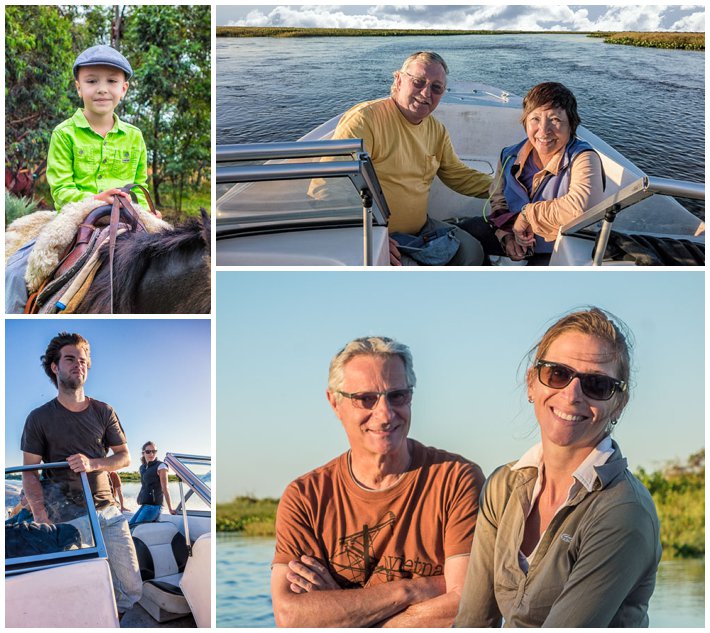 Toby (above-left) is a 6 year old from England who rode with us. He had never ridden a horse before, but Angie’s staff is gifted in working with children, and he was “racing us” (at a fast walk) by the third day. We spent the last afternoon on a bonus boat tour of the river (known for their dorado fishing) and sharing a cup of mate tea, which made for a relaxing way to end our trip.
Toby (above-left) is a 6 year old from England who rode with us. He had never ridden a horse before, but Angie’s staff is gifted in working with children, and he was “racing us” (at a fast walk) by the third day. We spent the last afternoon on a bonus boat tour of the river (known for their dorado fishing) and sharing a cup of mate tea, which made for a relaxing way to end our trip.
 Last week I took three cooking classes from Maite Eusebio, here in Cuenca. She is Peruvian-born, and her recipes are highly influenced by that origin. She has been living in Ecuador with her artist husband, Alberto Soriano since the 1970’s. Alberto has been Evelyn’s art instructor since we arrived here. There was an interesting article about the couple recently in Zero Latitude Magazine.
Last week I took three cooking classes from Maite Eusebio, here in Cuenca. She is Peruvian-born, and her recipes are highly influenced by that origin. She has been living in Ecuador with her artist husband, Alberto Soriano since the 1970’s. Alberto has been Evelyn’s art instructor since we arrived here. There was an interesting article about the couple recently in Zero Latitude Magazine.